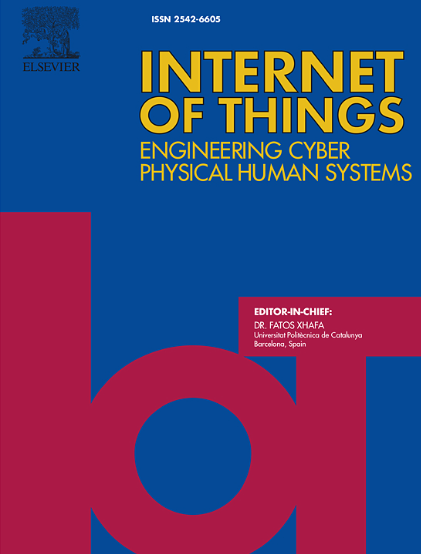为未来支持6g的物联网网络提供内存高效和强大的Mirai僵尸网络检测
IF 6
3区 计算机科学
Q1 COMPUTER SCIENCE, INFORMATION SYSTEMS
引用次数: 0
摘要
支持6g的物联网网络的兴起为保护资源受限的设备免受高内存和能源密集型网络威胁(如Mirai僵尸网络)带来了重大挑战。由于其计算和内存开销,现有的入侵检测系统(IDS)和基于深度学习的安全机制对于受限的物联网环境通常是不切实际的。本研究提出了一个基于tinyml的实时异常检测框架,用于分类和检测四种不同的Mirai僵尸网络攻击类型:扫描、UDP洪水、TCP洪水和ACK洪水,同时分析它们对物联网设备内存消耗和安全性的影响。为了解决检测精度、内存效率和推理时间之间的权衡,Naïve实现了针对TinyML部署优化的贝叶斯(NB)、随机森林(RF)、支持向量机(SVM)和k -近邻(KNN)分类器,并对其进行了比较。实验结果表明,KNN的检测准确率在99%以上,同时保持较低的内存占用,使其成为受限物联网环境中实时安全的最合适选择。相反,NB和RF以更低的计算开销提供了更高的推理速度,在检测延迟和资源效率之间进行了权衡。此外,分析显示,Mirai僵尸网络引起的内存消耗会导致碎片增加、内存使用过度和能耗增加,这凸显了对自适应安全机制的需求。该框架为增强支持6g的物联网生态系统的安全性提供了轻量级、内存高效的解决方案,在智慧城市、智能家居和工业4.0中具有潜在的应用前景。通过集成内存感知ML模型,这项工作为开发可扩展的网络安全框架提供了重要见解,以确保抵御不断变化的网络威胁。本文章由计算机程序翻译,如有差异,请以英文原文为准。
Memory-efficient and robust detection of Mirai botnet for future 6G-enabled IoT networks
The rise of 6G-enabled IoT networks has introduced significant challenges in securing resource-constrained devices against high-memory and energy-intensive cyber threats, such as the Mirai botnet. Due to their computational and memory overhead, existing Intrusion Detection Systems (IDS) and deep learning-based security mechanisms are often impractical for constrained IoT environments. This study proposes a TinyML-based real-time anomaly detection framework to classify and detect four distinct Mirai botnet attack types: Scan, UDP flooding, TCP flooding, and ACK flooding while analysing their impact on IoT device memory consumption and security.
To address the trade-off between detection accuracy, memory efficiency, and inference time, Naïve Bayes (NB), Random Forest (RF), Support Vector Machine (SVM), and K-Nearest Neighbours (KNN) classifiers optimized for TinyML deployment are implemented and compared. Experimental results demonstrate that KNN achieves detection accuracy above 99%, while maintaining low memory usage, making it the most suitable choice for real-time security in constrained IoT environments. Conversely, NB and RF offer superior inference speed with lower computational overhead, presenting a trade-off between detection latency and resource efficiency. Additionally, analysis reveals that Mirai botnet-induced memory consumption leads to increased fragmentation, excessive RAM usage, and higher energy consumption, highlighting the need for adaptive security mechanisms. This framework provides a lightweight, memory-efficient solution for enhancing security in 6G-enabled IoT ecosystems, with potential applications in smart cities, smart homes, and Industry 4.0. By integrating memory-aware ML models, this work contributes critical insights into developing scalable cybersecurity frameworks to ensure resilience against evolving cyber threats.
求助全文
通过发布文献求助,成功后即可免费获取论文全文。
去求助
来源期刊

Internet of Things
Multiple-
CiteScore
3.60
自引率
5.10%
发文量
115
审稿时长
37 days
期刊介绍:
Internet of Things; Engineering Cyber Physical Human Systems is a comprehensive journal encouraging cross collaboration between researchers, engineers and practitioners in the field of IoT & Cyber Physical Human Systems. The journal offers a unique platform to exchange scientific information on the entire breadth of technology, science, and societal applications of the IoT.
The journal will place a high priority on timely publication, and provide a home for high quality.
Furthermore, IOT is interested in publishing topical Special Issues on any aspect of IOT.
 求助内容:
求助内容: 应助结果提醒方式:
应助结果提醒方式:


